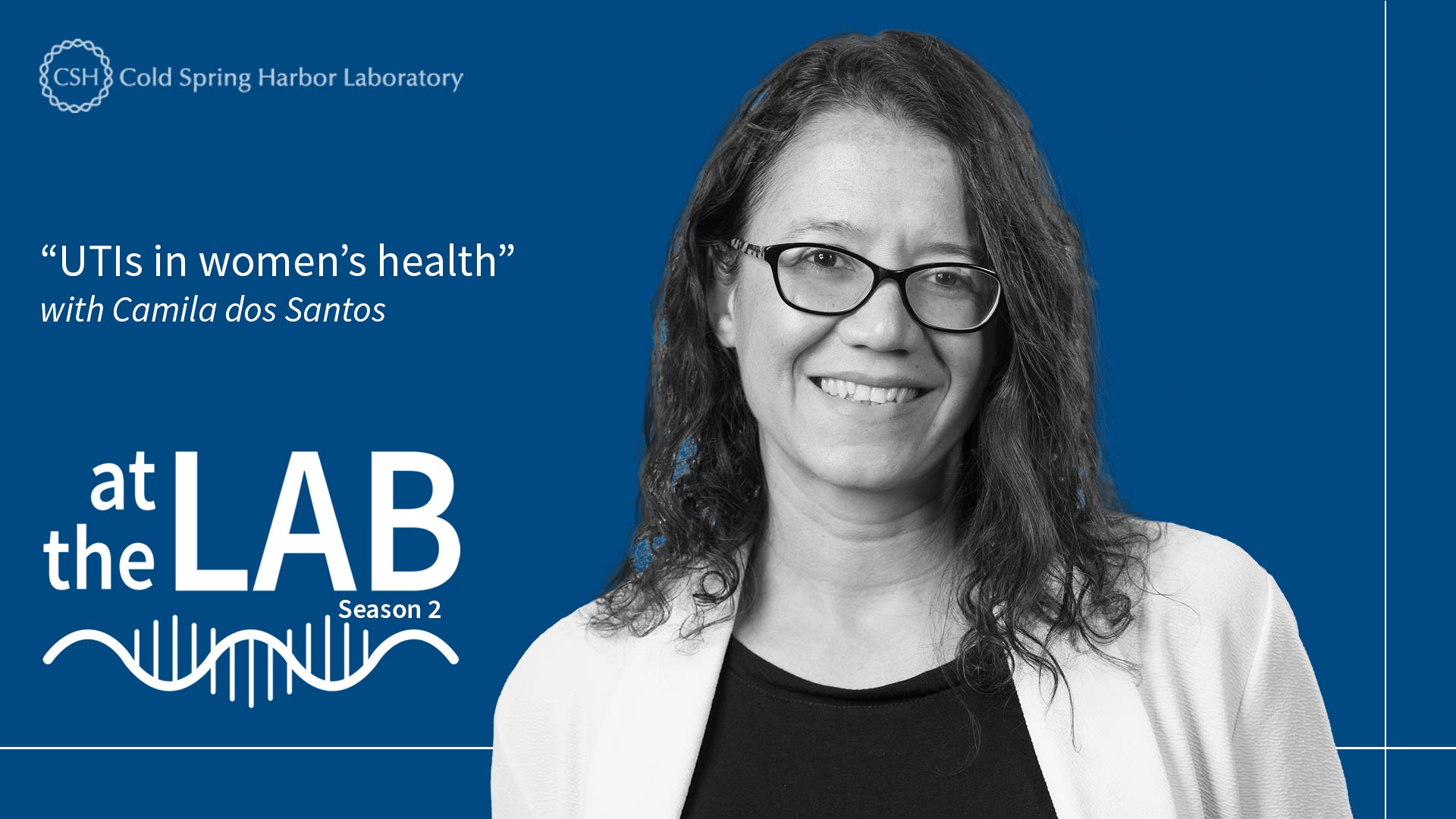“It started with an accident observation,” says CSHL Associate Professor Camila dos Santos. That observation? A group of lab mice with urinary tract infections also had breast abnormalities. What might this mean for women’s health? And how does such an accident even happen to begin with? Tune in and find out.
Read the related story: A link between breast changes and . . . UTIs?
Transcript
Caroline Cosgrove: You’re now At the Lab with Cold Spring Harbor Laboratory. My name is Caroline Cosgrove, and this week At the Lab, “UTIs in women’s health.”
CC: Urinary tract infections affect one in three women around the world. Yet, despite how common they are, there’s not much research out there investigating how UTIs affect women’s health. That’s why CSHL Associate Professor Camila dos Santos became curious about the topic. Well, sort of—here’s dos Santos.
Camila dos Santos: It started with an accident observation. We have a mouse model in our lab. Pregnancy inhibits [breast] cancer progression in that animal. A former postdoc decided to test if it was pregnancy in its entirety—meaning animals will have a placenta, babies, and then nursing—or if we could induce a pseudo-pregnancy in those animals. So, you just give the animals hormones to the same levels they would have during pregnancy. A side effect of that procedure is that animals will develop urinary blockage. And because they can’t pee, bacteria accumulate, and they develop a UTI.
CC: Here’s where that “accident observation” happens.
CdS: I was doing the necropsy on those animals, and the mammary tissue was very abnormal. So, that’s when I started looking it up. Does UTI have any correlation with breast abnormalities? And even though women are at a higher risk to develop UTIs, there is no real link that we could find tying together UTI and breast abnormalities.
CC: So, it was up to the dos Santos lab to see whether such a link exists. They found it in a molecule called TIMP1, which regulates immune cell functions. The team discovered that UTIs cause TIMP1 to build up in mice’s plasma. This ultimately led to an increase in collagen deposits in the mice’s breast tissue, along with an enlargement of the milk ducts.
CC: Importantly, when the lab treated the UTIs with an antibody that neutralized TIMP1, the changes to the breast tissue were reversed. The discovery prompted the dos Santos lab to ask another question. Is it just UTIs, or could other infections and inflammatory responses have a similar effect?
CdS: We think that UTI was the first one that we accidentally bumped into. Now we can really dissect what is the cause—the chicken and the egg kind of question here. We are investigating how other changes women go through in their lifetime could be influencing tissue in non-canonical ways to increase cancer risk.
CC: Ultimately, dos Santos’ research could lead to advancements in patient screening and diagnosis, and even more promisingly, new strategies for breast cancer prevention.
CC: Thanks again for joining us At the Lab. If you like what you heard, please hit subscribe and visit CSHL.edu for more fascinating science stories like this one. For Cold Spring Harbor Laboratory, I’m Caroline Cosgrove, and I’ll see you next time At the Lab.
